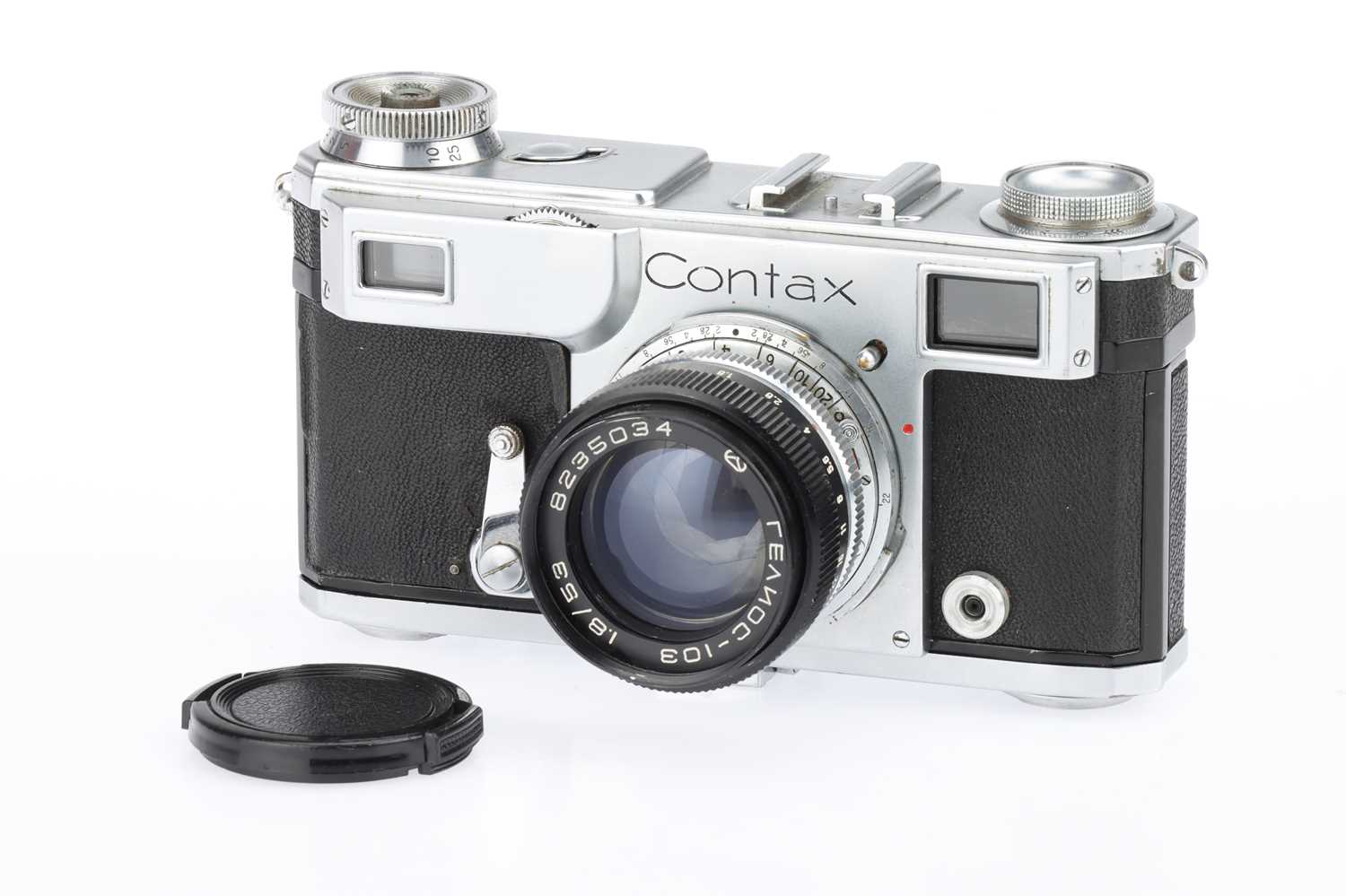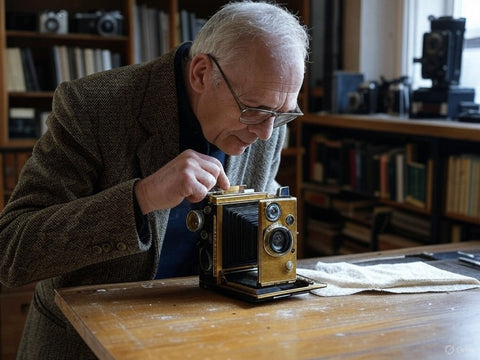Have you ever wondered if that old camera in your attic is a hidden treasure? Many vintage cameras have become highly sought-after collectibles, with some classic models fetching hundreds or even thousands of dollars when in good working condition. The resurgence of film photography and a strong collector market mean now might be the perfect time to cash in on your old gear. In this guide, we’ll explore which vintage cameras are most valuable, what factors increase their worth, and the best ways to sell vintage cameras effectively for top dollar, all tailored to photography enthusiasts like the Camera Recycle community.
This Hasselblad 500C/M, a classic medium format camera from 1970, remains highly sought-after by collectors for its legendary quality. Many high-end vintage cameras like this can command prices well above their original costs. Below are a few examples of in-demand vintage models and what they’re worth today:

High-Value Vintage Camera Models
- Rolleiflex 2.8F (TLR) – A twin-lens reflex camera beloved for ultra-sharp photos and elegant design. Resale prices range from about £500 up to £2,500 depending on condition and accessories.
- Leica M3 (35mm Rangefinder) – An iconic 35mm camera first released in 1954. Collectors will pay at least a few hundred for a clean M3, and eBay listings range roughly £1000 to £3,000 for this model in good shape.
- Canon AE-1 (35mm SLR) – A hugely popular 1970s SLR (one of the first with a microprocessor). If you kept yours mint, unused examples can fetch up to £200. Used ones in great condition also hold strong value due to this model’s enduring popularity.
- Nikon F (35mm SLR) – Nikon’s legendary 1960s pro SLR is still a hot item. Photographers love its modular system and durability. A vintage Nikon F can sell for as much as £500 in today’s market, especially if in excellent condition and working order.
- Hasselblad 500C/M (Medium Format) – The famed modular medium-format camera (famously used by NASA astronauts) is the crown jewel for many collectors. A well-maintained 500C/M can list for over £2,000 on the used market. reflecting its premium reputation and rarity in top condition.
Of course, these are just a few examples. Classic models from other brands (like the Zeiss Ikon Contax II rangefinder or the Polaroid SX-70 instant camera) also attract solid prices in the right circles. But what exactly makes one old camera worth more than another? Let’s have a look at the key factors that drive up the value of vintage cameras.

What Makes a Vintage Camera Valuable?
Not every old camera is a goldmine – age alone doesn’t guarantee value. The value of a vintage camera depends on a mix of qualities that collectors and enthusiasts care about. Here are the top factors that can increase a camera’s value:
- Brand & Model Reputation: Famous marques known for quality (think Leica, Hasselblad, Nikon) naturally hold value. A camera that was exceptional in its day or has a “cult classic” status among photographers will command a premium. For example, a limited-run Leica or a renowned Nikon model is more desirable than a no-name mass-market camera.
- Rarity: Scarcity drives up prices. Limited production runs, special editions, or variants (like a rare black-paint finish or a prototype) significantly boost a camera’s worth. In other words, if few were made or few survive, collectors will pay more.
- Condition and Functionality: Mint or excellent condition cameras fetch the highest prices. Collectors prize cameras with clean optics, intact leatherette, and smooth mechanics. Full functionality (shutter, meter, etc. working) is important to many buyers, especially those who plan to shoot with the camera. Any restoration or repairs should be high quality. Cosmetically rough or non-working units have far lower value.
- Original Accessories & Packaging: Having the original case, lens caps, instruction manuals, packaging, or matching lenses can enhance the value of a vintage camera. A complete kit as it was sold new is far more appealing. Even small extras like period-correct straps or flash units can add to the price.
- Historical Significance & Provenance: If a camera has a notable story, it becomes more valuable. For instance, a camera model used to capture historic events or one owned by a famous photographer will carry a premium. Provenance (documented history of ownership) can turn a common camera into a prized collector’s piece.
- Demand and Film Availability: Lastly, market demand matters. Cameras that use still-available film formats (35mm, 120 medium format) and produce distinctive results (sought by art photographers) tend to stay valuable. Conversely, an antique camera that takes extinct film might only appeal as a décor item, limiting its market value. Fortunately, with film photography enjoying renewed popularity, demand for many usable vintage models is high.
In summary, quality, rarity, condition, and story are what turn an old camera into a valuable collectible. A mass-produced old point-and-shoot might only be worth £5 at a thrift shop, whereas a well-kept Leica from the 1950s or a rare variant can be worth a small fortune. Once you’ve identified that you have a worthwhile vintage camera, the next step is figuring out the best way to sell it.

Best Ways to Sell Vintage Cameras
When it comes time to sell, choosing the right avenue will help you reach the best buyers and get the best price. Here are some of the most effective ways to sell a vintage camera and the pros and cons of each:
- Online Marketplaces (eBay, Marketplace): Large platforms like eBay offer a broad global audience of buyers, which is great for finding the market price for your camera. You can attract collectors worldwide. However, you’ll be competing with other listings and will need to handle shipping, customer inquiries, and seller fees. Etsy can also work for vintage gear (it has a niche for vintage electronics) and provides an easy listing process. Just be prepared to stand out with good photos and accurate descriptions.
- Specialty Auctions & Collector Forums: For high-end or rare cameras, consider specialised venues (We recommend Flints or SAS Auctions). Photography auction houses or online forums/groups dedicated to film camera collectors can connect you with serious buyers who know the gear’s value. These buyers might pay a premium for a pristine item. The trade-off is it might take longer to find the right buyer, and auction houses may take a commission.
- Local Camera Shops or Trade-In Programs: Many local camera stores (and even some big retailers) buy used camera gear. This route is quick – you get an offer on the spot or a trade-in credit toward new gear. It also saves you the hassle of shipping. The downside is stores need to resell for profit, so their offer might be lower than a private sale. Still, if you prioritize convenience, a reputable camera shop or a service like London Camera Exchange (for UK readers) can be a good choice.
- Classifieds and Social Media: Don’t overlook local classifieds (like Gumtree or Craigslist) and social media marketplaces. Facebook Marketplace and photography groups on Facebook or Instagram allow you to list your camera to people who might be nearby or within enthusiast circles. This can lead to a quick sale without fees, and you might connect with a new hobbyist in your area. Just be cautious and meet in safe locations when doing in-person deals.
- Specialised Buyback Services (Such as ourselves, Camera Recycle): One of the easiest methods is to use a service that buys vintage cameras directly. For instance, Camera Recycle offers a quick, hassle-free way to sell your old cameras – no need to create listings or haggle with buyers, they handle everything for you. You simply pack up your gear, send it with a free shipping label, and receive a no-obligation quote quickly. This is a great option if you want a guaranteed sale with minimal effort, though the offer you get is based on fair market value and the service’s resell margin. The convenience factor is high: Camera Recycle’s process saves you time and ensures you get paid fast for your equipment.
Remember to present your camera attractively – take clear photos, note its condition and any accessories, and be honest about any flaws. This will build trust with potential buyers and help you get the best outcome.

Market Trends: The Film Photography Resurgence
It’s worth noting the current market trends that are impacting vintage camera values. In recent years, film photography has undergone a real resurgence in popularity – especially among younger photographers and creators. Old 35mm SLRs that were gathering dust are now “selling like hot cakes” to a new generation of enthusiasts. Cameras like the Nikon F3, Canon AE-1, and Pentax K1000 have surged in demand as teenagers and twenty-somethings rediscover the joys of analogue shooting.
This trend has driven up prices for many workhorse film cameras. In fact, retailers of used camera gear have reported film camera sales jumping by 50% in the last year thanks to this wave of interest. Online, vibrant subcultures share film photos with hashtags like #filmisnotdead, fuelling even more curiosity. For owners of vintage cameras, this means a larger pool of eager buyers than existed a decade ago.
Collectors, too, remain very active. There’s a nostalgia factor and a recognition that certain mechanical cameras will never be made again. Some film stocks have become scarce (making each shot more special), but dedicated shooters are keeping the medium alive. Film camera values have been stabilising or even increasing over the past couple of years – a reversal from the early 2000s when digital seemed to have killed the film market. All these trends suggest that if you have a desirable vintage camera in good condition, you’re in a strong position to sell it at a great price in today’s market.

Get the Most from Your Vintage Camera
Selling a vintage camera can be rewarding both financially and nostalgically. By identifying high-value models, understanding what drives their worth, and choosing the right selling method, you can maximize your return. Remember that just because it’s old doesn’t automatically mean it’s valuable – do your homework on its demand, rarity, and condition. Once you’ve determined your camera is a gem, present it well and pick a selling option that suits your needs, whether that’s an auction site for the widest reach or a specialized service for ease and speed.
If you’re looking for a quick, safe, and easy sale, Camera Recycle is here to help. We provide a convenient service for turning your old cameras into cash, handling the details so you don’t have to worry about listings or negotiations. With the current enthusiasm for film and classic cameras, there’s no better time to unlock the value of your vintage camera – and maybe make someone else’s day when they become the new owner of a piece of photography history. Happy selling!




